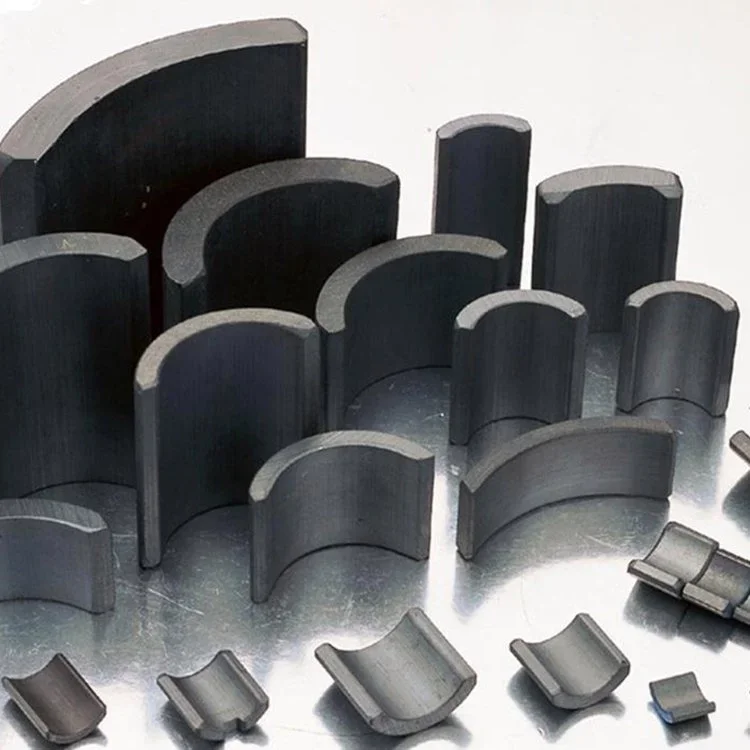- This topic is empty.
-
AuthorPosts
-
2024-08-12 at 2:19 pm #4538
In the world of magnet manufacturing, customization and adaptability are key factors that drive innovation and meet the diverse needs of industries. One such magnetic material that has gained significant attention is the injection ferrite magnet. With its unique properties and versatile applications, the demand for customizable injection ferrite magnets has been on the rise. In this blog post, Zhonghang will delve into the manufacturing process of these magnets, exploring the various steps involved and highlighting the benefits they offer.
1. Understanding Injection Ferrite Magnets:
Before diving into the manufacturing process, it is essential to grasp the fundamentals of injection ferrite magnets. These magnets are made from a combination of magnetic powders, binders, and additives, which are mixed together to form a slurry. This slurry is then injected into molds, allowing for the creation of complex shapes and designs. Injection ferrite magnets possess excellent magnetic properties, high coercivity, and resistance to demagnetization, making them ideal for a wide range of applications.
2. Raw Materials and Preparation:
The first step in the manufacturing process is the selection and preparation of raw materials. Magnetic powders, typically composed of strontium or barium ferrite, are carefully chosen based on the desired magnetic properties. Binders and additives, such as thermoplastic resins and lubricants, are also selected to ensure proper flowability and moldability of the slurry.
Once the materials are chosen, they undergo a thorough mixing process to achieve a homogenous blend. This is crucial to ensure consistent magnetic properties and uniform distribution of particles throughout the slurry.
3. Slurry Injection and Molding:
After the preparation of the slurry, it is injected into molds using specialized injection molding machines. These machines apply high pressure to force the slurry into intricate mold cavities, allowing for the creation of complex shapes and designs. The molds used in the injection process are typically made from steel or aluminum and are designed to withstand the high pressures and temperatures involved.

4. Curing and Demolding:
Once the slurry is injected into the molds, the curing process begins. The molds are heated to a specific temperature, allowing the binder to melt and bond the magnetic particles together. This curing process ensures the formation of a solid magnet with the desired magnetic properties.
After the magnets have cured, they are demolded from the molds. This step requires precision and care to prevent any damage to the magnets. The demolding process can be automated or manual, depending on the complexity of the magnet design and the production requirements.
5. Finishing and Quality Control:
Once the magnets are demolded, they undergo various finishing processes to achieve the desired surface finish and dimensions. These processes may include grinding, polishing, and coating, depending on the application requirements. Quality control checks are performed at each stage to ensure that the magnets meet the specified standards and exhibit the desired magnetic properties.
6. Customization and Adaptability:
One of the key advantages of the injection ferrite magnet manufacturing process is its ability to offer customization and adaptability. The injection molding technique allows for the production of magnets with complex shapes, intricate details, and precise dimensions. This flexibility enables manufacturers to cater to the specific needs of various industries, including automotive, electronics, and renewable energy.
7. Advantages of Injection Ferrite Magnets:
Injection ferrite magnets offer several advantages over other magnetic materials. These include:
– High coercivity and resistance to demagnetization, ensuring long-term stability.
– Excellent temperature stability, making them suitable for high-temperature applications.
– Good corrosion resistance, extending the lifespan of the magnets.
– Versatility in design and shape, allowing for customization and integration into various products.
– Cost-effectiveness compared to other magnet manufacturing processes.
Conclusion:
The manufacturing process of customizable injection ferrite magnets is a complex and precise procedure that enables the production of magnets with exceptional magnetic properties and adaptability. With their unique advantages and versatility, injection ferrite magnets have become a preferred choice for industries seeking customized magnetic solutions. As technology advances and demands evolve, the injection ferrite magnet manufacturing process continues to push boundaries, offering innovative solutions for a wide range of applications.
Injection ferrite magnet customizer – Zhonghang
Zhonghang is a collection of rare earth permanent magnet material research and development, production, management as one of the national high-tech company. We make full use of the industrial advantages of rare earth resource materials, target the mid-to-high-end market, and are committed to providing customers with various types of magnets. Welcome to consult and cooperate!
https://www.zhsdmagnet.com/Customizable-injection-ferrite-magnet-manufacturing-process.html
http://www.zhsdmagnet.com
Zhonghang -
AuthorPosts
- You must be logged in to reply to this topic.